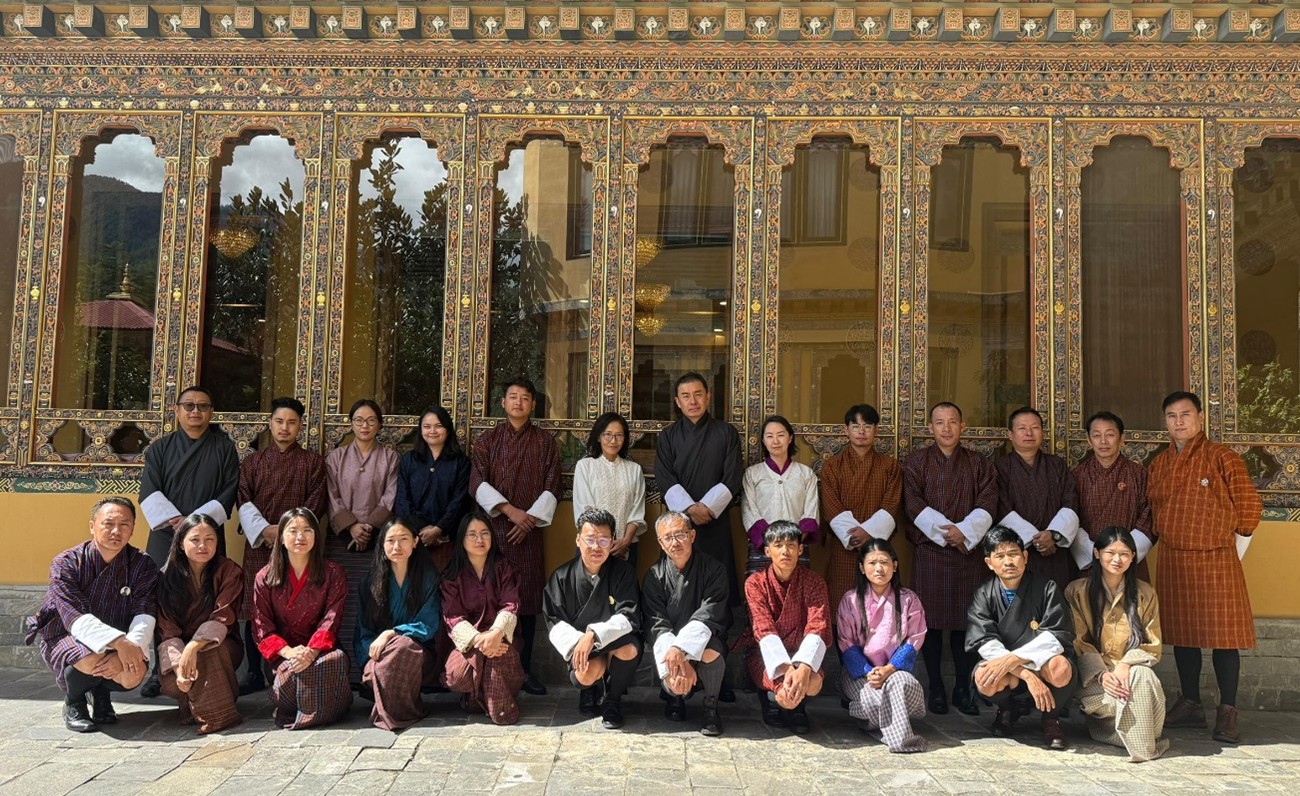Hands-on Training on Adaptation Monitoring and Evaluation (M&E) in Bhutan: Session 1
| Event | The First Session of the Hands-on Training Programme on Monitoring and Evaluation (M&E) of Climate Change Adaptation in Bhutan |
|---|---|
| Date | 18-19 September 2025 |
| Venue | Namgay Heritage Hotel, Thimphu, Bhutan |
| Organizers | Ministry of the Environment, Japan (MOEJ) Mitsubishi UFJ Research and Consulting Co., Ltd. (MURC) Institute for Global Environmental Strategies (IGES) |
Overview
The Institute for Global Environmental Strategies (IGES) held the first session of a hands-on training programme on monitoring and evaluation (M&E) of climate change adaptation on 18–19 September 2025 in Thimphu, Bhutan. The two-day workshop, supported by the Department of Environment & Climate Change of the Ministry of Energy and Natural Resources, introduced 22 officers from several ministries to the Japan Adaptation Monitoring & Evaluation System (JAMES), a web-based tool available on AP-PLAT.

Participants attended lectures by IGES on general M&E and case studies from Japan, as well as a presentation by the Bhutanese government on their National Adaptation Plan (NAP) and current adaptation initiatives. The workshop featured hands-on exercises using JAMES indicators, discussions on integrating JAMES into national systems, and insights into Monitoring, Evaluation and Learning (MEL), including the use of process, output, and outcome indicators. Group exercises highlighted the importance of clear criteria for consistent scoring and regular monitoring. The workshop further emphasized leveraging Bhutan’s existing systems, such as the Gross National Happiness (GNH) Tool, while tailoring MEL tools for climate action to build a cohesive MEL framework at both national and local levels.
KEY FINDINGS
The following are the key findings from the workshop:
- Participants deepened their understanding of different types of indicators: process, output, and outcome, and recognized the importance of setting both quantitative and qualitative indicators for effective MEL.
- Group exercises highlighted the importance of clearly defining criteria to interpret the scoring, which is crucial for continuous and regular monitoring and evaluation (M&E), as well as for accurately evaluating the progress of adaptation programmes and actions.
- Participants recognized the feasibility of leveraging Bhutan’s existing monitoring systems (e.g., GNH Tool) while integrating specialized MEL tools for climate action if they organize robust data sharing platforms, uniform datasets, or a data framework/governance.
DAY 1
The training workshop commenced with opening remarks by Mr. Sonam Tashi, Director, Department of Environment & Climate Change, Ministry of Energy & Natural Resources, Bhutan. IGES presented on AP-PLAT and JAMES, including case studies from Japan. Then, the Bhutanese government gave a presentation about their NAP and the status of adaptation. IGES provided a lecture on how to use JAMES for M&E. Participants selected the sectors in which they are involved in daily operations, explored process indicators and output/outcome indicators in JAMES, and attempted to evaluate the programmes and projects they are engaged in. Having gone through the JAMES, participants discussed what they could learn from JAMES and what was necessary to implement M&E in Bhutan. This prompted them to re-recognize the need to organize the necessary data in a systematic manner for the M&E in the country.
DAY 2
Following the discussion on Day 1, the workshop focused on opportunities to enhance the training programme and JAMES further. The discussion collected their voices about what they would like to gain more in this training and what additional elements they believe could strengthen JAMES. Recognizing that the Bhutanese government has a relatively small number of officers, IGES proposed an idea of “one government, one tool for climate change MEL” leveraging the existing system, such as the GNH monitoring system, which was well received. The workshop closed with the assignment for participants, setting the stage for the second meeting of the training programme to place greater emphasis on evaluation, including reviewing the progress and effectiveness of their tangible programmes using JAMES.
LOOKING AHEAD: SECOND SESSION
The first training session introduced participants to the basics of M&E, including how to use the JAMES and the importance of setting up both quantitative and qualitative indicators, as well as clearly defined criteria for interpreting the scoring. By the time of the second training session, scheduled for January 2026 (to be confirmed), COP30 will have concluded, and it is expected that an agreement will have been reached on the indicators for measuring progress towards the Global Goal on Adaptation (GGA). In addition to the evaluation given as an assignment, the second session will highlight how the GGA indicators agreed at the international level can be appropriately applied in Bhutan.
RELATED INFORMATION
(Posted : 29/Sep/2025)
